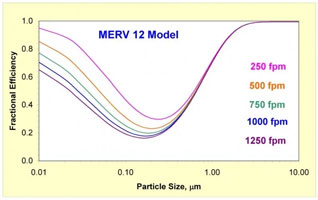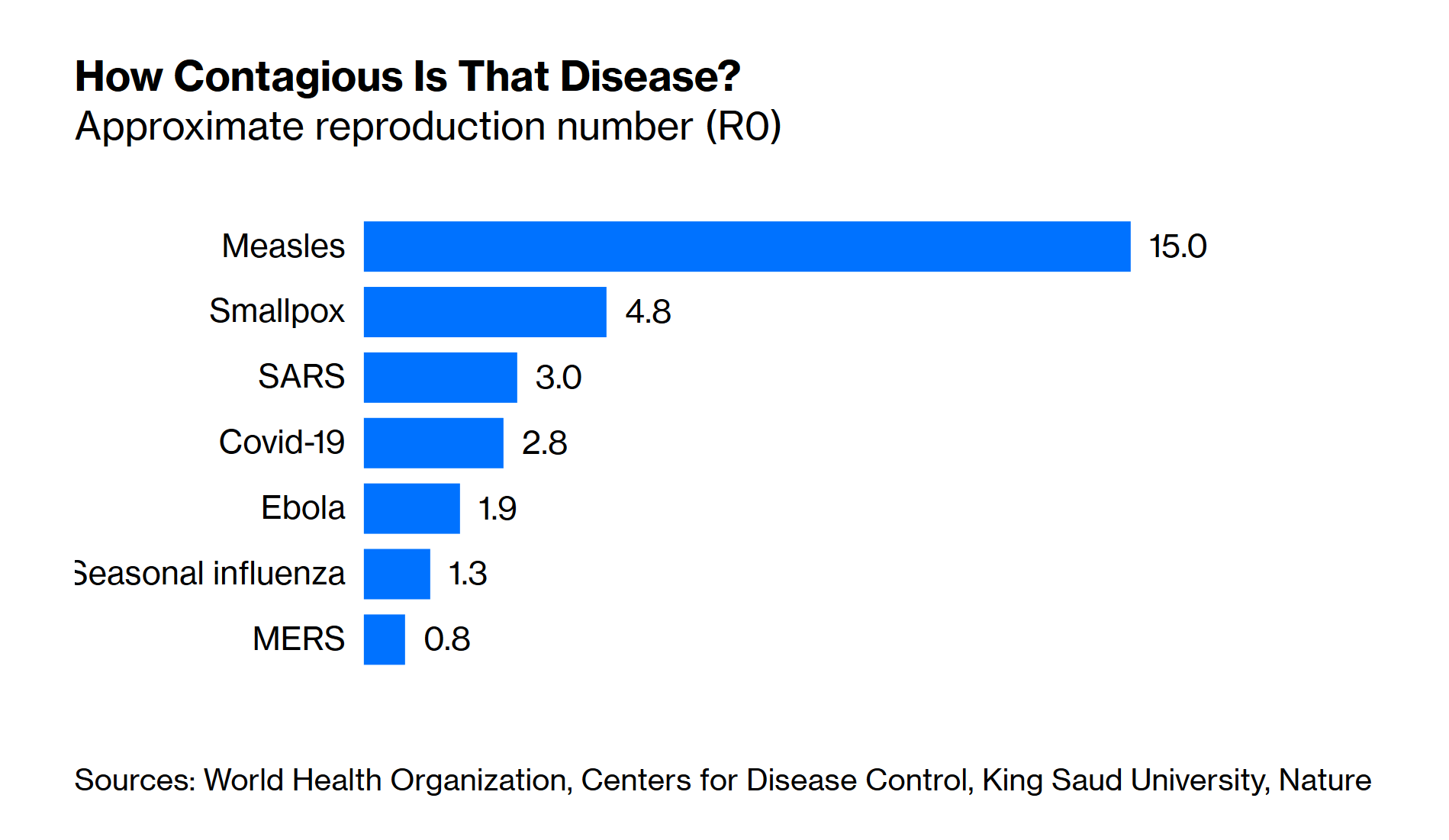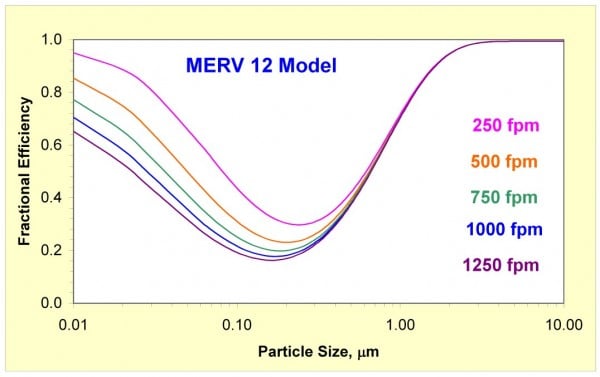
News
Can You Filter COVID-19 From Indoor Air?
You’re probably wondering if your HEPA or MERV air filters will protect you and your family from spreading Coronavirus around the house.
In short, the answer is “not always.” The problem is that no filter removes 100 percent of viral particles, 100 percent of the time. That doesn’t mean they don’t help. Good filters, especially when tied to your forced-air furnace or central air conditioning, greatly reduce the number of pathogens floating around your home. But anything less than 100 percent is still a risk. According to research conducted in 2009, a single virus particle is enough to infect someone—and lead to full-blown symptoms.
Reality Check. COVID-19 falls somewhere in the middle of other deadly diseases, in terms of how easy it is to spread. Source: Bloomberg
Let’s look at what are probably the two best filtration technologies for home use, other than ultraviolet light: HEPA and MERV filters:
HEPA—According to Australian researchers, “HEPA filters may not provide adequate protection for all threats: viruses are submicron in size and have small minimum infections doses (MID50). Thus, an appropriate viral challenge may yield penetration that will lead to infection of personnel.”
MERV—Several factors impact how well MERV filters work, including the specific rating of the filter (higher is better). For example, with MERV filters, the speed of airflow through the filter impacts how much of the virus it collects. The example below shows that at slower airspeeds, a MERV 12 filter is much more effective (with “1” being 100% effective).
MERV Filter Effectiveness At Various Air Velocities

Speed Matters. In this model, a MERV filter works most efficiently when airflow is slowest. Source
Another unanswered question about filters is whether virus particles, once trapped, will stay lodged in the filter matrix long enough for them to die naturally. We know, for example, that COVID-19 can survive for several days on some surfaces. If the airflow is suddenly changed, could it dislodge a deadly particle? No one seems to know.
And finally, there’s the question of in-room filter performance, versus built-in HVAC systems. Depending on the size of the unit, it’s rated CADR (clean-air delivery rate) rating (350 is considered good, the amount of particles captured will vary widely. I have tested both ionizing type standalone filters and standalone HEPA filters in my own home using an Awair air sensor to measure their effect, and neither seems to have much impact on the amount of particulate in the air.
I would definitely recommend an integrated HVAC filter system over an aftermarket product, with the caveat that if you want to isolate a bedroom or sick room, you’ll need a way to zone it separately. In any case, filtration alone is not enough to tackle a serious threat like coronavirus. You also need diffusion.
Filtration Plus Diffusion
Building codes related to indoor air quality aim to maintain acceptable indoor air quality, not to scrub away every risky particle. For builders, that typically means meeting the ASHRAE 62.2 ventilation requirement. This results in a certain number of air changes per hour (ACH) in the home.
Newer homes operating under this requirement already have basic air difusion in place. Many older homes do not. It’s key that this capability be used in combination with filtration. In other words, by constantly diffusing the air at the same time your’re filtering it, you have fewer particles to capture, giving filters a higher chance of catching virions that could make you sick. A good product candidate for ventilating in this manner would be one of Panasonic’s small FV-04VE1 energy recovery ventilator units, which run continuously, replacing stale air with fresh air, although exhaust only bath fans or range hoods can be used to keep air moving.
No matter how good your air difusion and filtration, continue to practice sanitation and isolation protocols. Don’t let a single rogue virion that lands invisibly on a surface ruin your week, or your life.–Matt Power, Editor-in-Chief, Green Builder
This article was reprinted with permission from Green Builder Media.














